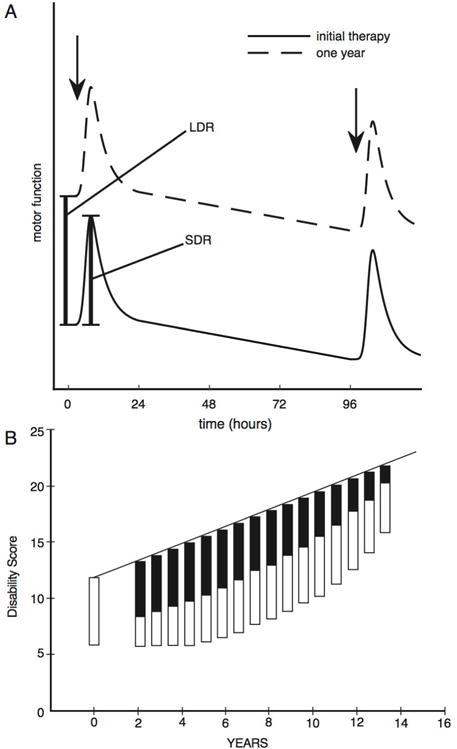Figure 1.

Clinical characteristics of the SDR and LDR effects. (A) Schematic representation of the SDR and LDR effects (adapted from Nutt et al., Short and long-duration responses to levodopa during the first year of therapy, Ann Neurology, 1997, Figure 1).9 Drug-naïve PD patients were given IV levodopa infusions, and motor function assessed with a finger-tapping task. After 4 days, a second infusion was given. Patients returned after one year and underwent the same protocol after PD medications were held overnight. The LDR is visible as the upward migration of motor performance immediately prior to the first IV levodopa infusion after one year of treatment. The SDR immediately follows IV levodopa infusions. (B) From Clissold et al., Longitudinal study of the motor response to levodopa in Parkinson’s disease, Mov Disord, 2006, Figure 5.20 Schematic of the progression of the magnitude of the short- (open boxes; SDR) and long- (solid boxes; LDR) duration responses to levodopa. The solid line represents disability in the untreated state and is a partial function of the magnitude of the LDR. With disease progression, the LDR wanes and the SDR becomes a relatively larger component of the levodopa response. Higher scores indicate increasing disability.
